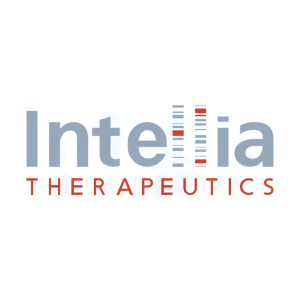amyloidosis. The Phase 1 clinical trial is an open-label, two-part trial evaluating the safety and efficacy of nex-z in patients with ATTR-CM. These results were shared in a late-breaking oral presentation at the American Heart Association Scientific Sessions 2025 in New Orleans, Louisiana on November 10, 2025.
The Phase 1 trial enrolled 36 patients, a high proportion of whom had advanced disease at baseline (50% classified as New York Heart Association (“NYHA”) Class III and 31% with variant ATTR-CM). The data cut-off date for the clinical data presented on November 10 was August 23, 2025.
Across all patients in the Phase 1 trial, a one-time treatment of nex-z led to consistently rapid, deep and sustained serum TTR reduction, regardless of baseline levels, through the data cut-off date. All patients in the Phase 1 trial continued to show a sustained response with no evidence of a waning effect over time. Among the 9 patients who reached 36 months of follow-up, the mean serum TTR reduction was 87% (mean absolute serum TTR level of 22.9 µg/mL [Mean 95% CI, 16.0 to 29.8]), consistent with the overall cohort at month 24.
Patients dosed with nex-z in the Phase 1 trial continued to show evidence of disease stabilization or improvement at month 24 compared to baseline. Evaluation was based on multiple markers of cardiomyopathy, including N-terminal pro-B-type natriuretic peptide (“NT-proBNP”), high sensitivity Troponin T (“hs-Troponin T”), 6-minute walk test (“6MWT”), Kansas City Cardiomyopathy Questionnaire (“KCCQ”), and echocardiographic measures.
At 24 months, NT-proBNP and hs-Troponin T, which are markers known to be associated with disease progression, showed stability or improvement in 70% and 85% of patients in the Phase 1 trial, respectively. Preservation of functional status, as measured by 6MWT, was observed with 69% of patients either showing stability or improvement. Notably, 81% of patients were stable or improved in their NYHA classification at 24 months, including improvement in 83% of patients with NYHA Class III. There also was evidence of benefit in quality of life, regardless of NYHA Class at baseline as assessed by KCCQ. Assessment of cardiac structure with echocardiography, showed a similar pattern of stability with limited progression of cardiac remodeling at 24 months.
Additionally, findings from a mortality assessment were presented. This post-hoc analysis was conducted on a cohort of 1,792 ATTR-CM patients from the National Amyloidosis Center whose baseline characteristics were matched to those of the Phase 1 nex-z population. The analysis showed patients receiving a one-time treatment with nex-z in the Phase 1 trial had an all-cause mortality rate of 3.9 per 100 patient-years, while the matched cohort had an all-cause mortality rate of 12.7 per 100 patient-years (HR 0.27, p=0.009).
Nex-z was generally well tolerated across all patients in the Phase 1 clinical trial. The most commonly reported treatment-related adverse events were infusion-related reactions and transaminase elevations. In this Phase 1 population, liver enzyme elevations did not exceed Grade 2. Through the long-term follow-up evaluation, as of the data cut-off date, including patients who reached 44 months, any event leading to death (n=4) was related to the progression of the patients’ underlying cardiovascular disease, consistent with what is expected for this patient population.
Nex-z is being further evaluated in patients with ATTR amyloidosis in the ongoing global Phase 3 MAGNITUDE and MANGITUDE-2 clinical trials for ATTR-CM and hereditary ATTR amyloidosis with polyneuropathy, respectively. On October 29, 2025, the United States Food and Drug Administration placed a clinical hold on the investigational new drug applications for the MAGNITUDE and MAGNITUDE-2 trials.
Forward-Looking Statements
This Current Report on Form 8-K and certain of the materials furnished or filed herewith contain forward-looking statements within the meaning of the Private Securities Litigation Reform Act of 1995, as amended. The words “may,” “will,” “could,” “would,” “should,” “expect,” “plan,” “anticipate,” “intend,” “believe,” “estimate,” “predict,” “project,” “potential,” “continue,” “target” and similar expressions are intended to identify forward-looking statements, although not all forward-looking statements contain these identifying words.
These forward-looking statements include, but are not limited to, express or implied statements regarding Intellia’s beliefs and expectations regarding: the safety, tolerability, efficacy, success and advancement of its clinical programs for lonvoguran ziclumeran or “lonvo-z” (f/k/a NTLA-2002) for hereditary angioedema (“HAE”) and nexiguran ziclumeran or “nex-z” (f/k/a NTLA-2001) for transthyretin (“ATTR”) amyloidosis, including the ability to successfully complete its global Phase 3 HAELO study of lonvo-z for HAE and to address the clinical hold that the United States Food and Drug Administration (“FDA”) placed on the investigational new drug (“IND”) applications for its global Phase 3 MAGNITUDE study of nex-z for ATTR amyloidosis with cardiomyopathy (“ATTR-CM”) and its global Phase 3 MAGNITUDE-2 study for hereditary ATTR amyloidosis with polyneuropathy (“ATTRv-PN”) to resume the MAGNITUDE and MAGNITUDE-2 clinical trials; its ability to present a topline data readout from the HAELO study by mid-2026; lonvo-z’s potential to become a one-time treatment for HAE; and nex-z’s potential to become a one-time treatment for ATTR amyloidosis.







